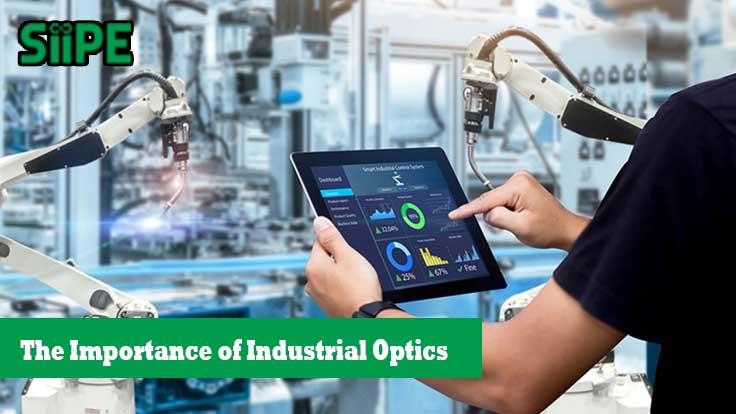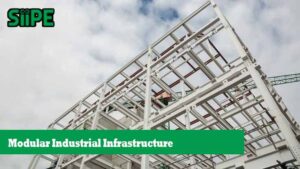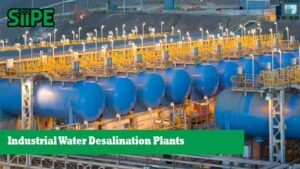In the age of digitalization, industries are increasingly reliant on advanced technologies to optimize processes, enhance productivity, and maintain competitiveness. Among the key technologies driving this transformation is industrial optics. Industrial optics involves the application of optical systems and technologies in various industrial processes, playing a crucial role in areas such as automation, quality control, and communication. This article explores the importance of industrial optics in the digitalization era, highlighting its impact across different sectors and its potential for future advancements.
The Role of Industrial Optics in Automation
1. Enhanced Precision and Accuracy
Industrial optics enable high-precision measurements and inspections, which are essential for automated manufacturing processes. Optical sensors and systems can detect minute defects and deviations in products, ensuring that only those meeting stringent quality standards proceed to the next stage. This level of precision minimizes errors and reduces waste, leading to cost savings and improved efficiency.
2. Advanced Robotics and Machine Vision
Robotics and machine vision systems heavily rely on optical technologies. Cameras and optical sensors provide the “eyes” for robots, allowing them to perform complex tasks such as assembly, inspection, and sorting with remarkable accuracy. These systems can identify objects, measure dimensions, and detect defects at high speeds, making them indispensable in modern manufacturing environments.
Quality Control and Assurance
1. Non-Destructive Testing
Industrial optics facilitate non-destructive testing (NDT) methods, enabling the inspection of materials and components without causing damage. Techniques such as laser scanning, holography, and infrared thermography allow for the detection of internal flaws, surface defects, and structural integrity. This ensures that products meet safety and quality standards while reducing the need for costly and time-consuming destructive tests.
2. Real-Time Monitoring
Optical sensors and imaging systems provide real-time monitoring capabilities, crucial for maintaining consistent quality in production lines. By continuously capturing and analyzing data, these systems can identify deviations from specifications and trigger corrective actions. This real-time feedback loop enhances product quality and minimizes the risk of defects reaching the end consumer.
Communication and Data Transmission
1. Fiber Optic Networks
The digitalization era has witnessed an exponential increase in data transmission requirements. Fiber optic networks, which use light signals to transmit data, offer unparalleled speed and bandwidth compared to traditional copper cables. These networks form the backbone of modern communication systems, supporting everything from internet connectivity to industrial automation and IoT (Internet of Things) applications.
2. Optical Sensors for IoT
Optical sensors are integral to IoT applications, providing accurate and reliable data collection in various industrial settings. These sensors can monitor environmental conditions, equipment performance, and production parameters, transmitting data to centralized control systems for analysis and decision-making. The use of optical sensors in IoT enhances operational efficiency, predictive maintenance, and overall process optimization.
Innovations in Industrial Optics
1. Laser Technology
Lasers have revolutionized industrial optics, offering precise and versatile tools for cutting, welding, engraving, and measuring. Laser technology enables high-speed and high-precision processing of materials, from metals to plastics and even biological tissues. The ability to control laser parameters with extreme accuracy makes it possible to achieve intricate designs and maintain tight tolerances in manufacturing processes.
2. Optical Coherence Tomography (OCT)
Optical Coherence Tomography (OCT) is a cutting-edge imaging technique that provides high-resolution, cross-sectional images of materials and structures. Originally developed for medical applications, OCT is now being adopted in industrial settings for quality control and inspection. It can detect subsurface defects and measure thickness variations with micrometer precision, making it invaluable for industries such as electronics and aerospace.
Impact on Various Industries
1. Manufacturing
In the manufacturing sector, industrial optics are essential for achieving high-quality production and automation. Optical sensors and imaging systems enable precise measurements, defect detection, and real-time monitoring, ensuring that products meet stringent quality standards. Additionally, laser technology facilitates advanced manufacturing processes such as cutting, welding, and engraving.
2. Automotive
The automotive industry benefits significantly from industrial optics in areas such as assembly line automation, quality control, and autonomous driving. Optical sensors and cameras are used for inspecting components, detecting defects, and ensuring precise assembly. In autonomous vehicles, optical systems enable features like lane detection, obstacle recognition, and adaptive cruise control.
3. Aerospace
In aerospace, where safety and reliability are paramount, industrial optics play a crucial role in non-destructive testing and quality assurance. Techniques such as laser scanning and optical coherence tomography allow for detailed inspection of critical components, ensuring their structural integrity. Fiber optic communication systems also support the high-speed data transmission required for avionics and in-flight entertainment.
4. Electronics
The electronics industry relies on industrial optics for precision manufacturing and inspection of intricate components. Optical lithography is used in semiconductor fabrication, enabling the production of microchips with nanometer-scale features. Additionally, optical sensors and imaging systems ensure the quality of electronic assemblies, detecting defects that could impact performance and reliability.
Future Prospects and Challenges
1. Advancements in Optical Technologies
The future of industrial optics is promising, with ongoing advancements in optical technologies driving further improvements in precision, speed, and versatility. Innovations in laser technology, imaging systems, and optical sensors will continue to enhance industrial processes, enabling new applications and increasing efficiency.
2. Integration with Artificial Intelligence (AI)
The integration of optical systems with artificial intelligence (AI) holds significant potential for industrial applications. AI algorithms can analyze data from optical sensors and imaging systems, providing insights for predictive maintenance, quality control, and process optimization. This synergy between optics and AI will drive the next wave of industrial automation and digitalization.
3. Challenges and Considerations
Despite the numerous benefits, the adoption of industrial optics also presents challenges. High initial costs, the need for specialized expertise, and the integration of optical systems with existing infrastructure can be barriers to implementation. Additionally, ensuring the reliability and robustness of optical systems in harsh industrial environments is crucial.
Siipe’s industrial optical technology advantages
Discover the advantages of industrial optical technology with Siipe! We provide advanced solutions such as optical sensors, precision measuring systems, and laser devices specifically designed to meet the needs of the digitalization era. With Siipe, you get the latest technology, customizable products, and reliable technical support to improve automation, quality control, and operational efficiency in your industry. Don’t miss the opportunity to take your business to the next level with optical solutions from Siipe.id!











